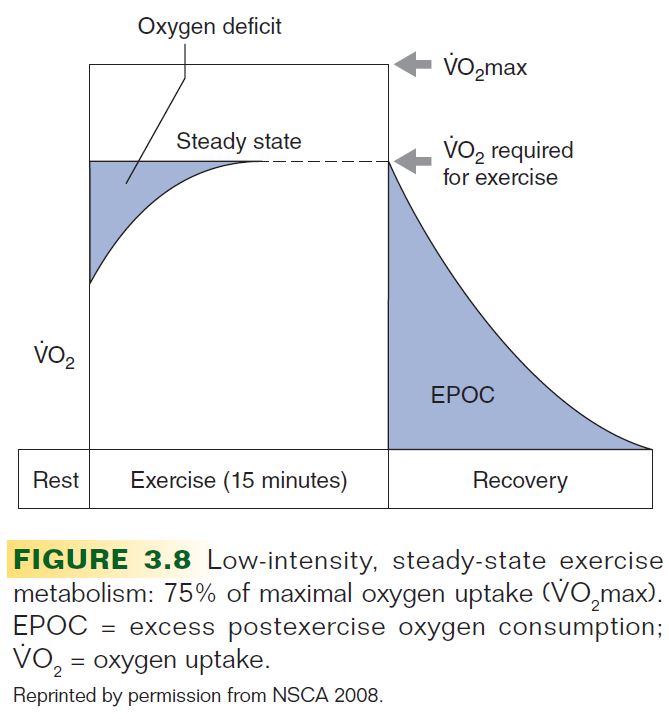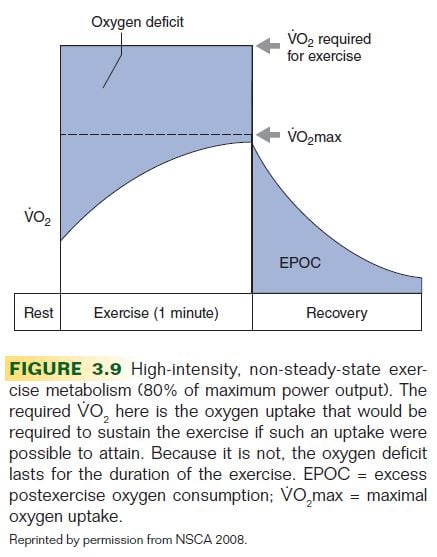Oxygen Uptake and the Aerobic and Anaerobic Contributions to Exercise
by NSCA's Essentials of Personal Training, Second Edition
Kinetic Select
May 2020
This excerpt from NSCA’s Essentials of Personal Training, Second Edition briefly reviews the role of oxygen uptake in exercise.
The following is an exclusive excerpt from the book NSCA's Essentials of Personal Training, Second Edition, published by Human Kinetics. All text and images provided by Human Kinetics.
Oxygen uptake (or consumption) is a measure of a person’s ability to take in and use oxygen. The higher the oxygen uptake, the more fit the person is thought to be. During low-intensity exercise with a constant power output, oxygen uptake increases for the first few minutes until a steady state of uptake (oxygen demand equals oxygen consumption) is reached (figure 3.8) (6). At the start of the exercise bout, however, some of the energy must be supplied through anaerobic mechanisms (47). This anaerobic contribution to the total energy cost of exercise is termed the oxygen deficit. After exercise, oxygen uptake remains above preexercise levels for a period of time that varies according to the intensity and length of the exercise. Postexercise oxygen uptake has been termed the oxygen debt, or the excess postexercise oxygen consumption (EPOC). The EPOC is the oxygen uptake above resting values used to restore the body to the preexercise condition. There are only small to moderate relationships between the oxygen deficit and the EPOC; the oxygen deficit may influence the size of the EPOC, but the two are not equal (6).

Anaerobic mechanisms provide much of the energy for work if the exercise intensity is above the maximal oxygen uptake that a person can attain (figure 3.9). For instance, if a client who was not used to that type of activity jumped right into an advanced spinning class, most of the energy would be supplied by anaerobic mechanisms. Generally, as the contribution of anaerobic mechanisms supporting the exercise increases, the exercise duration decreases (6, 15).

NSCA’s Essentials of Personal Training, Second Edition, is the authoritative text for personal trainers, health and fitness instructors, and other fitness professionals as well as the primary preparation source for those taking the NSCA Certified Personal Trainer® (NSCA-CPT®) exam. The book is available in bookstores everywhere, as well as online at the NSCA Store.
- Privacy Policy
- Your Privacy Choices
- Terms of Use
- Retraction and Correction Policy
- © 2026 National Strength and Conditioning Association